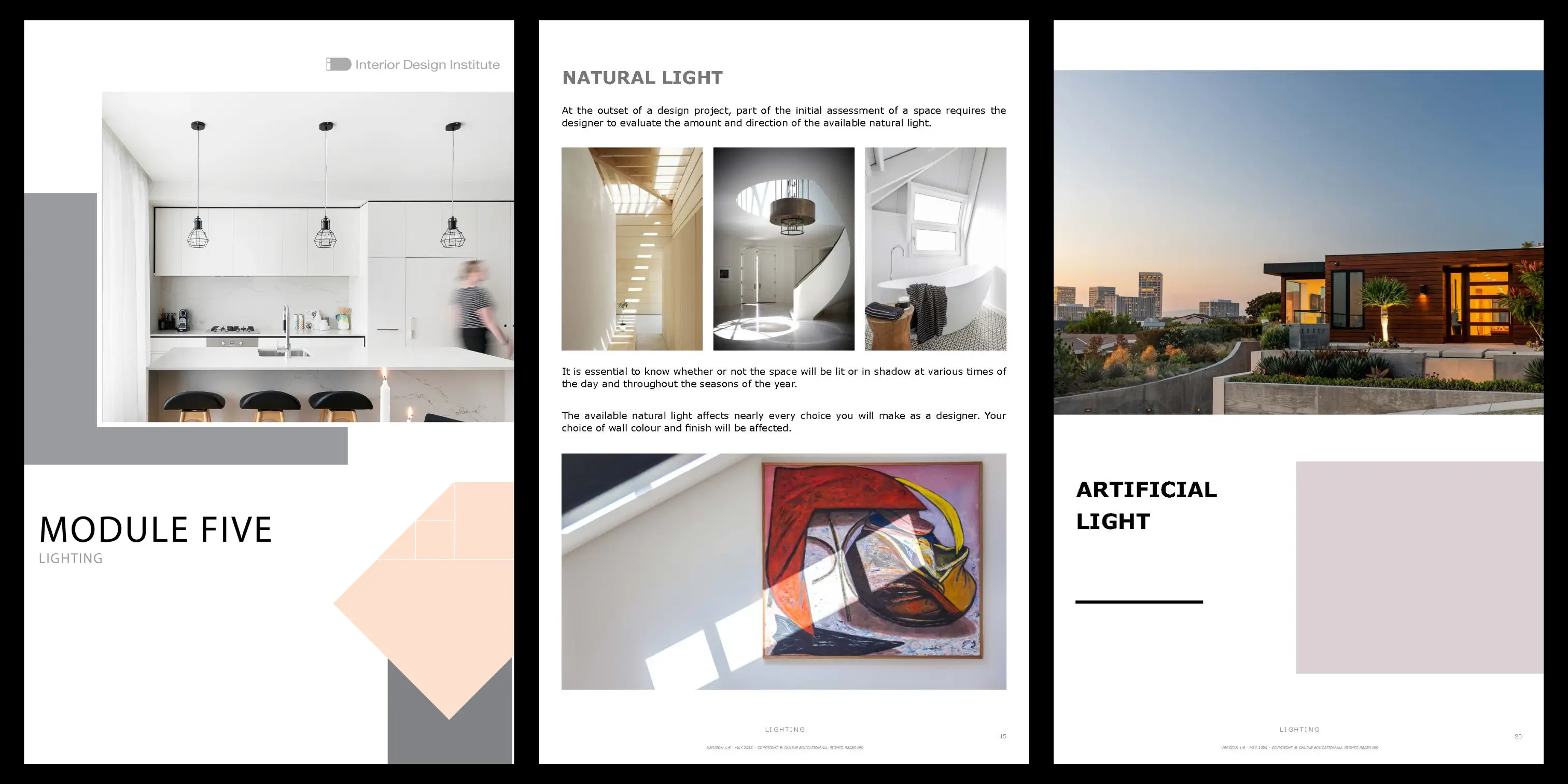In this module, you’ll explore the principles of interior lighting design and gain the skills to use both natural and artificial light to enhance the functionality, mood, and aesthetic appeal of interior spaces. You will learn how to assess lighting needs for different rooms, consider the impact of architectural elements, and create lighting plans that complement furniture layouts, colour schemes, and interior finishes.
The module covers how light interacts with colour, textures, materials, and fabrics, helping you understand how to manipulate illumination to highlight key features, create ambiance, and enhance the perception of space. You’ll explore different types of lighting used in interior design, including ambient, task, accent, and decorative lighting, and learn to select and specify fixtures that align with both design intent and client requirements.
Throughout the module, you’ll engage in practical exercises, lighting simulations, and scenario-based challenges that mirror real-world projects. You’ll have opportunities to develop lighting plans for residential and commercial interiors, evaluate existing lighting setups, and propose improvements to enhance both style and functionality. Quizzes and tasks will reinforce your theoretical knowledge while allowing you to apply your skills in practical contexts.
By the end of this module, you will be able to confidently design and specify lighting schemes that complement your interiors, enhance architectural features, and create the desired atmosphere for each space. This module is part of the Diploma of Interior Design (MSF50222) and is designed to equip you with both the creative insight and technical knowledge needed to implement professional-standard lighting solutions in your interior projects.
Additionally, this module includes guidance on using digital tools and software to visualise lighting effects, allowing you to experiment with light placement, intensity, and colour to create compelling and client-ready design presentations.

Lighting is fundamental to creating mood, atmosphere, and functionality. In Module 5, you’ll:


This module integrates practical skills from the following accredited unit:
This unit is delivered through practical exercises, design challenges, and visual analysis, helping you develop professional skills in lighting design for residential interiors.
In Module 5, we will cover the following topics and beyond:
By completing Module 5, you will:
Our expert tutors will guide you step by step — from planning and sketching layouts to adding fixtures, switches, and dimmers, and creating reflected ceiling plans by hand or with software. With their guidance, you’ll confidently design, read, and present professional lighting plans for any interior project.
Explore our course outline page to learn more about the other modules.
View Course Outline